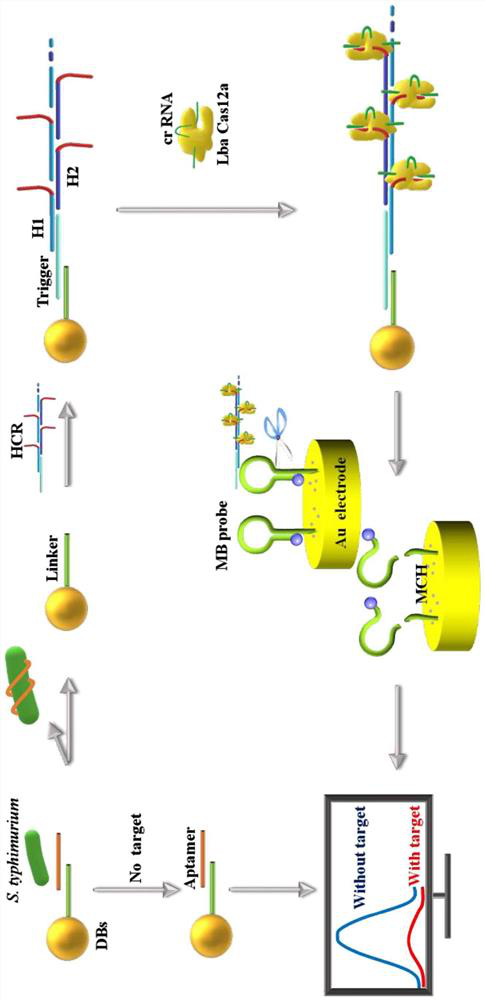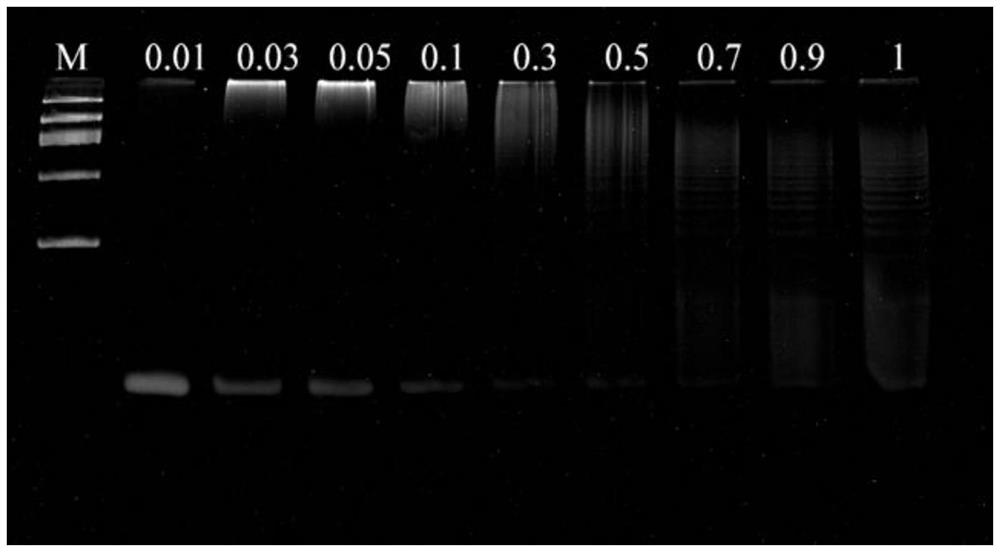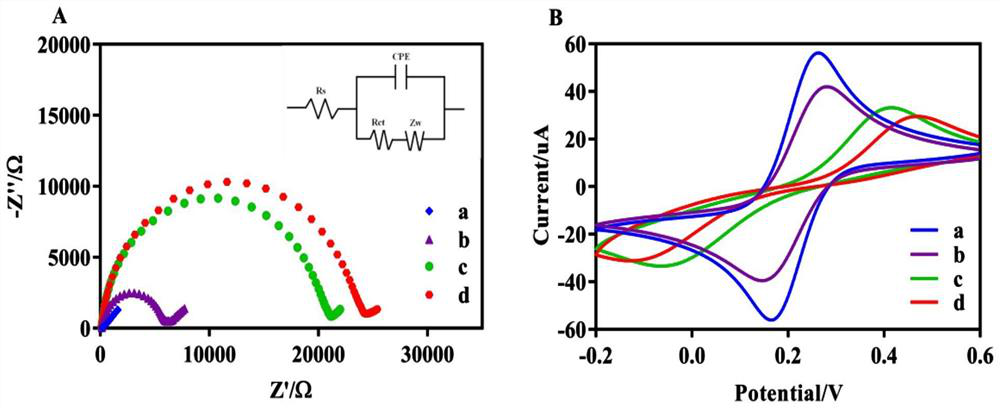Electrochemical biosensing composition, working solution, electrochemical biosensor and application thereof
A biosensor and biosensing technology applied in the field of electrochemical biosensing composition to achieve high sensitivity and high specificity
- Summary
- Abstract
- Description
- Claims
- Application Information
AI Technical Summary
Problems solved by technology
Method used
Image
Examples
Embodiment 1
[0050] The preparation of embodiment 1 biosensor
[0051] Preparation of MB probe-modified biosensing electrodes
[0052] Dip the bare gold electrode (GE) into the piranha solution (H 2 SO 4 / H 2 o 2 = 3:1) for 20 minutes to remove impurities, then scrub with absorbent cotton balls soaked in deionized water. The electrode was polished with 0.05 μM alumina powder until the surface was smooth, and then scrubbed with absorbent cotton balls. Thiolated MB probes were dissolved in 1 mM phosphate buffered saline (PBS) solution (containing 14 mM NaCl, 0.3 mM KCl and 10 mM TCEP, pH 7.4). Then, 10 μL of 0.3 μM MB probe was added to the pretreated electrode surface and incubated overnight at room temperature. In addition, 10 μL of MCH (1 μM) was dropped onto the GE surface and incubated at 37° C. for 1 hour. Finally, ultrapure water was used to remove unbound material on the electrode surface for electrochemical measurements and subsequent experiments.
[0053] Amplification of s...
Embodiment 2
[0066] Embodiment 2 Actual sample determination
[0067] Different Salmonella typhimurium densities (10 4 、10 5 and 10 6 CFU / mL) was added to sterilized milk samples for recovery analysis. HEPES buffer was used as a negative control.
[0068] Characterization of Effect Example 1 HCR Formation
[0069] The reaction efficiency of HCR is closely related to the sensitivity of the assay. Therefore, a PAGE assay was performed to verify the formation of the HCR product ( figure 2 ). The concentration of the initiator is related to the average molecular weight of the polymer produced by HCR. Too much trigger (Trigger) may cause hybridization between H1 and H2, which cannot form a long enough DNA polymer chain. Therefore, different concentrations of triggers are used to optimize the best performance of the HCR system. like figure 2 As shown, when the Trigger concentration is low, there is almost no high-band polymer in row 1. This finding suggests that HCR does not occur d...
PUM
 Login to View More
Login to View More Abstract
Description
Claims
Application Information
 Login to View More
Login to View More - R&D
- Intellectual Property
- Life Sciences
- Materials
- Tech Scout
- Unparalleled Data Quality
- Higher Quality Content
- 60% Fewer Hallucinations
Browse by: Latest US Patents, China's latest patents, Technical Efficacy Thesaurus, Application Domain, Technology Topic, Popular Technical Reports.
© 2025 PatSnap. All rights reserved.Legal|Privacy policy|Modern Slavery Act Transparency Statement|Sitemap|About US| Contact US: help@patsnap.com



